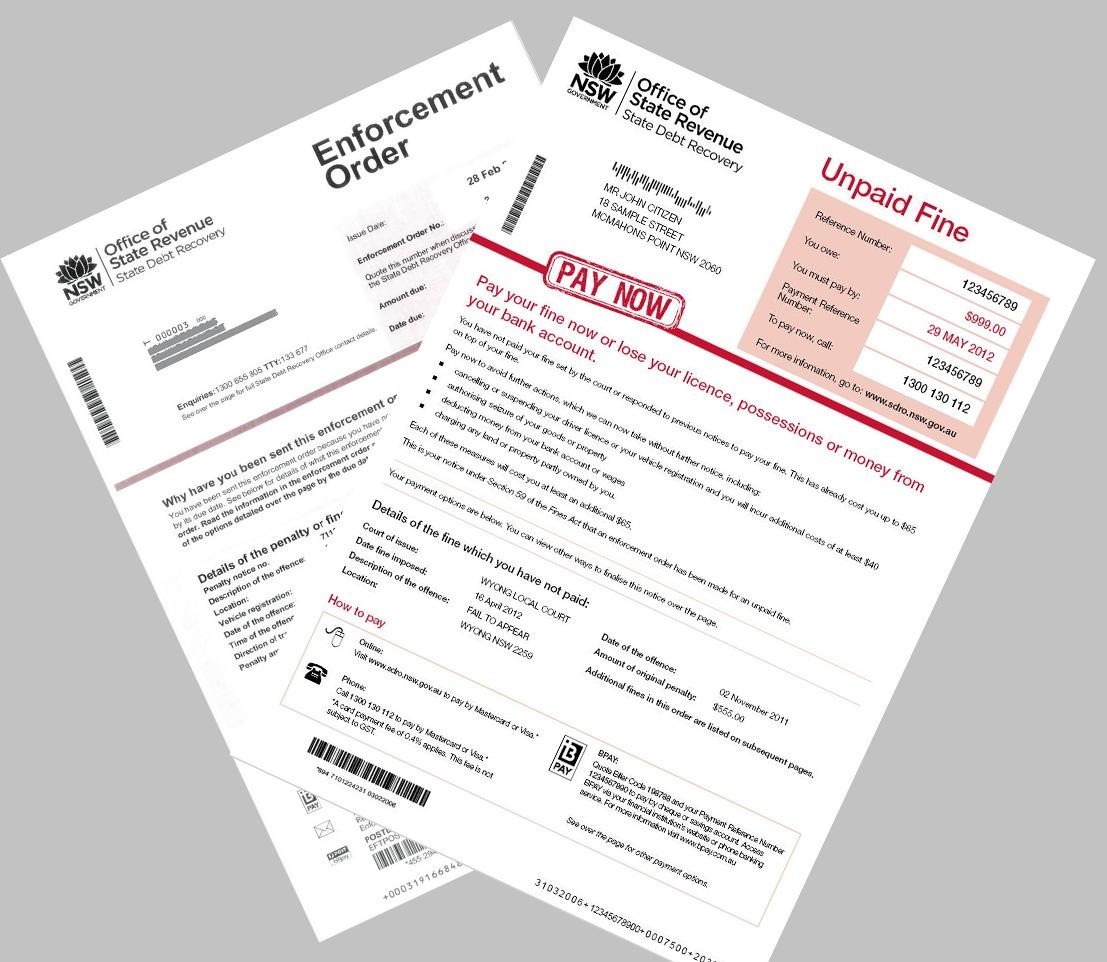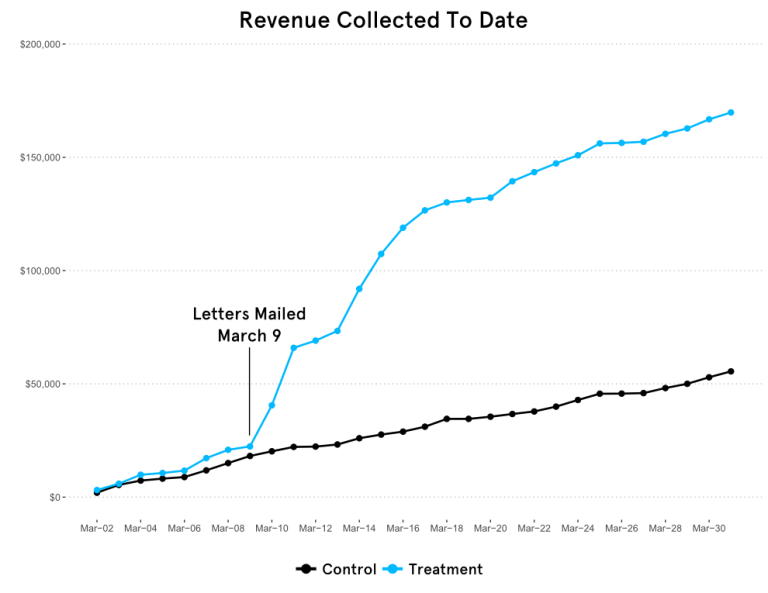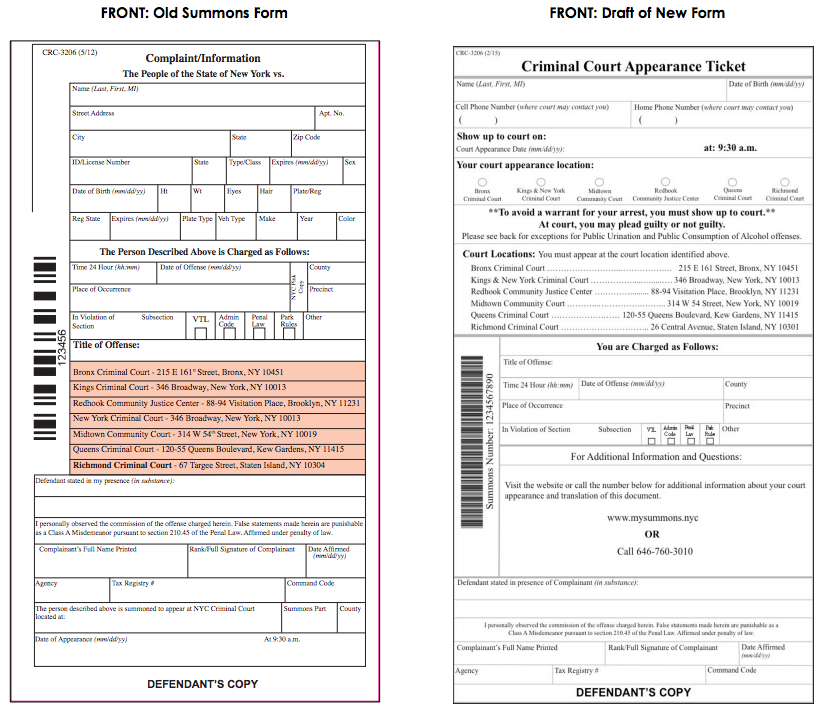Let’s be honest, we all have the best intentions to pay fines and bills on time and comply with the law, but research shows that most of us can sometimes be a little tardy about this, and occasionally, even dishonest, given the right opportunity. And our busy lives don’t help. It can be all too easy to simply forget to pay a fine or penalty ticket.
Behavioural scientists have been working with governments and other organisations to try to help us to be more responsible citizens and reduce non-compliant behaviours. Clearly, we benefit from this since compliance will mean we avoid serious consequences - such as larger fines or prosecutions, or the loss of valuable assets such as our car. For government organisations, just a small uplift in response rates from the public can result in significantly higher revenues and less administrative burdens in terms of costs and time wasted, since they no longer need to chase as many non responders.
In this article, we outline four examples which highlight the successes and different approaches of the low-cost experiments leveraging behavioural science being undertaken by governments and organisations to tackle this problem. From Australia, to the US and UK, behavioural insights are being adopted to help us behave like the model citizens we know we should be.
How behavioural science is encouraging people to pay their fines

A few years ago, the Behavioural Insights Unit within the New South Wales Department of Premier and Cabinet in Australia, partnered with the Office of State Revenue to see if they could nudge more timely payments of fines, debts and taxes from citizens.
First, the team conducted in-depth behavioural research amongst frontline staff in the call centre and compliance department to discover why people might not be responding to the payment notices. They identified three core problems at the root of noncompliance:
- People were not always sure what the payment notices meant
- They were also unsure as to what action they needed to take
- They were not always aware of the consequences of non-payment
With these findings in mind, the team redesigned the payment notices using insights from behavioural science, in particular, those which had been found to improve response rates to letters. They made a number of changes (see image):
- To make it clearer that an urgent payment was required to pay the fine, they added a prominent ‘Pay Now’ stamp. We tend to notice what is salient and stands out - as long as there isn’t too much trying to catch our attention.
- Responding to the perception that the letters lacked clarity and direction, they simplified the language used, writing in straightforward English and making plain the consequences of not responding to the letter: ‘Pay your fine now or lose your license, possessions or money from your bank account’. When information is presented in a way that requires minimal cognitive capacity and effort, we are more likely to pay attention, read and absorb that information. As the deadline to payment became more urgent so the language also became more direct, shifting from ‘amount owed’ to ‘you owe’.
- The team also made use of colour in the design and text. In Western culture, we know that red is often a negative indicator and usually means we need to take action. At the very least we are wired to pay attention to words in red (it’s no accident that all imperative/warning road signs are red). So the ‘Pay Now’ stamp and other important parts of the text and design were shown in red if payment of the fine was becoming urgent. (Early versions of the payment notice were printed in blue.)
- They also added a line stating that the majority of people paid their fines on time. For example, ‘8 out of 10 people pay their fine on time’. We tend to want to conform to social norms and do what everyone else is doing. Letting citizens know that they were in the minority for not having paid up, could likely nudge them to respond.
In February 2013, there were over 48,000 people who owed payments of this type. The team sent out versions of the new letter to half of those people and versions of the original letter to the other half.
The new letter prompted an increase in on-time payment rate of 3.1 percentage points - from just under 15% up to almost 18%. Even though this seems a small relative increase, it amounted to over Aus$1 million in revenue and meant that almost 9,000 people did not face the consequences of non or late payment, such as losing their licenses or having their vehicles deregistered. And with 2.7 million fines issued each year, rolling the letter out more broadly - as they are already doing - will save government departments even larger amounts of money.
The Manager of the Office of State Revenue commended the trial, saying “Applying behavioural insights has allowed us to make our letters and notices simpler and easier for people to respond to. By helping people to take action, we are supporting the community to avoid further sanctions.”
Using behavioural science to nudge people to pay their bills on time
In Chattanooga and Lexington in southeastern US, many people were not paying their sewage bills even though they had the resources to do so. On the understanding that people miss or forget to pay their bills either because they may not open the payment letter in the first place, or because they simply overlook it in the context of direct mail overload, The Behavioural Insights Team in North America designed a different intervention for each city to get people to open the letters and help them understand how to pay their bill. In each of the cities the redesigned letters included a salient red ‘Pay Now’ stamp at the top and used clever framing to remind people that non-response was a deliberate choice, rather than an oversight.
However, the letters to the citizens of Lexington differed in one essential aspect from those in Chattanooga in that they also leveraged reciprocity. Reciprocity is our tendency to reciprocate actions others have done to us, creating a ‘web of indebtedness'. If somebody does something for us, or gives us something, we are more likely to return the favour or pass the favour on.
Recognising that one of the biggest barriers preventing people from responding to letters stems from them not opening the letter in the first place, a handwritten note was added to the outside of the envelope, encouraging Lexington residents to open the letter. The notes read
“Ann, you really need to open this” or “John, you really need to read this”, adding a personal touch and reminding recipients that an actual person had sent the letter. The aim was to encourage recipients to feel obligated to open and read the letter because someone else had taken the time to write them a personal note.

Even though both cities have similar income levels, the difference between the two interventions was striking:
- Without reciprocity: In Chattanooga, response rates increased from 31.9% to 35.6%.
- With reciprocity: In Lexington, response rates more than doubled from 25.0% to 59.7%.
The two hours that 5 people spent writing messages on about 1,500 envelopes definitely paid off: Every dollar spent printing and mailing letters created a return of $90 in Lexington as compared to $13 in Chattanooga.
Overall, the one-month trial in Lexington generated a net revenue of $139,000. If the revised letter had been sent out to the entire sample, revenue collected that month would have been around $225,000.
Creating greater ‘Street Harmony’ by challenging cyclist behaviour and motorists’ beliefs

The Behavioural Architects (TBA) have also been leveraging some of these same insights to improve citizen behaviour in the UK. For example, we designed a simple behavioural intervention to reduce tension between cyclists and motorists in London which resulted in a marked decrease in the number of cyclists jumping red lights at the junctions where it was trialled.
After conducting qualitative research to better understand the behaviour of both cyclists and motorists, we saw there was a big gap in perception versus reality in terms of how many cyclists actually jumped lights compared to motorists’ perception of this. On average motorists perceive around 80% of cyclists behave in this way, but in reality, the figure is typically around 30% depending on the junction. Behavioural science helps us understand this discrepancy; we know that it is the jumpers who are much more salient in motorists’ minds than those cyclists who wait patiently at the lights and draw no attention to themselves. This can lead motorists to lump all cyclists together, making them, in motorists’ minds, all likely to be jumpers and causing motorists to be generally negatively disposed towards cyclists on busy London streets.
Based on these insights, TBA designed a simple trial at two high traffic junctions in London. A series of red posters displayed at the junctions, and salient to the eye (see image), communicated to both motorists and cyclists that only a minority of cyclists jump red lights; the majority of cyclists ‘wait at red lights’. These statements leveraged the concept of social norms, challenging not only the behaviour of deviant red-light jumping cyclists and making them think again before they cycled on, but also the inaccurate beliefs of motorists. The trial resulted in a decrease in ‘jumping behaviour’ of 21.4% at one of the junctions and 14.5% at another.
The trial resulted in multiple good outcomes - it rewarded good cycling citizens, challenged and nudged deviant ones to change their behaviour, and reduced tensions with motorists by getting them to rethink their common belief that all cyclists jump red lights. Expanding the trial to a larger area within London and to other cities could help to improve ‘street harmony’ and reduce tension on the roads nationwide.
How gaining a deeper behavioural understanding can fundamentally challenge existing beliefs

...and inspire better nudges.
In New York City, citizens caught committing a minor offence; riding a bike on the pavement for example, or consuming alcohol in a public place, littering or spitting in public, can receive a ticket. The ticket, known as a summons, requires citizens to show up in court where they can plead guilty or not guilty to the offence. However, if they fail to show up, the police will issue a warrant for their arrest. It can happen immediately and they can end up in jail, even if only for a short time. Despite the horror of this potential outcome, in 2014 around 40% of the 320,000 New Yorkers issued with a summons failed to appear in court to defend themselves and warrants were issued for their arrest. Why were citizens failing to comply?
To better understand people’s behaviour and the possible triggers for their failure to appear in court and come up with ways of tackling this problem, the behavioural science consultancy ideas42 partnered with the New York Police Department, the Mayor’s Office of Criminal Justice and the NY Office of Court Administration. ideas42 undertook in-depth behavioural research amongst those citizens who had failed to appear on their court date. Many people in the NYPD and Mayor’s Office had assumed that, given the stiff penalty, people would only miss court if they deliberately chose to do so.
However, the interviews revealed that citizens were making decisions skewed by cognitive bias and based on erroneous beliefs. Some were put off by the negative perceptions they had of the court experience, anticipating that it would be frightening and uncomfortable, perceptions often created and magnified by the media – and known as availability bias. There was also a tendency to bury their heads in the sand and try and ignore the whole situation - the ostrich effect. Some felt the punishment was excessive and did not fit the crime, whilst others, in the chaos of their busy lives, simply forgot to show up.
There were still others, particularly those on low incomes, who worried more about lost time off work than the threat of arrest. They preferred to put things off, discounting the future in behavioural science terminology, preferring to avoid a court appearance now, but risking an even worse outcome in the future.
Finally, many citizens struggled with the practical details of appearing in court, especially those who had inflexible or unpredictable jobs, finding it difficult to put in place a plan for taking time off work and to remember to follow through on that plan.
With these insights in mind, ideas42 set about redesigning the summons form (see the old and new versions of the form above). They made simple, but effective changes to the form including:
- Changing the title of the form to make the fact that it was a court summons more salient. The new form’s title ‘Criminal Court Appearance Ticket’ made the individual’s status of defendant apparent from the outset, compared to the old form, confusingly titled ‘Complaint/Information’.
- Making clear the negative consequences of not appearing in court, stating early in the form “To avoid a warrant for your arrest, you must show up in court”. This frames and emphasises the potential loss the individual will suffer if they do nothing. Evidence shows that people often respond more to information that focuses on potential losses.
- Using personal language, for example, “your arrest” or “You are charged”. This engages the citizen directly and gets their attention, making it clear what the form means for them.
- Making the key information salient and easy to find on the form, moving the court appearance date and time and location to the top of the form and writing it in bold text. This makes it easier for people to start making a plan as they have the information they need.
Ideas42 is currently running a randomised controlled trial to test the new form and is collating and analysing results to see if the new form has helped to improve citizens’ action.
In conclusion
The examples above are just some of the many initiatives using behavioural science to solve social and government problems. Taking time to understand the barriers and triggers behind any desired behaviour can not only challenge the existing beliefs and assumptions we have about behaviour, but also provide us with a plethora of simple actions that might dial down those barriers and make the triggers more salient, achieving significant behavioural change in the process. And, maybe, making us all better citizens, nudge by nudge.
How BE is transforming our lives 24/7 series - article 4
Behavioural economics (BE) is still a buzzword in many sectors, even after breaking into mainstream thinking several years ago and making a significant difference to our everyday lives.
In something of a salute to this, we are running a series of articles over the next 12 months to take our readers on a 360 degree tour of how behavioural science is transforming our lives 24/7; how it is shaping better outcomes for us, enhancing communications, increasing our engagement and response rates and making us healthier and better off.
Each part of the series will zoom in on a particular area or sector.
Sources:
http://bi.dpc.nsw.gov.au/assets/Behavioural-Insights/Library/Understanding-People-Better-Outcomes.pdf
BIT ‘How can a letter increase sewer bill payments?’ May 2016 http://www.behaviouralinsights.co.uk/north-america/how-can-a-letter-increase-sewer-bill-payments/; and WhatWorksCities Behavioural Insights for Cities http://38r8om2xjhhl25mw24492dir.wpengine.netdna-cdn.com/wp-content/uploads/2016/10/Behavioral-Insights-for-Cities-2.pdf
http://www.roadsafetygb.org.uk/news/5343.html; http://www.thedrum.com/news/2016/12/07/the-behavioural-architects-and-mba-challenge-motorists-misperceptions-cyclists-and
Ideas42 ‘New, Behaviorally-Informed NYC Summonses Hit the Streets’ April 2016 http://www.ideas42.org/blog/new-behaviorally-informed-nyc-summonses-hit-streets/ ;
Chris Peak ‘Why Behavioral Science Has Become the Next Big Thing for Solving Society’s Problems’ March 2015, http://www.dailygood.org/story/1540/why-behavioral-science-has-become-the-next-big-thing-for-solving-society-s-problems-chris-peak/ ;
The Mayor’s Office of Criminal Justice, Summons Reform, http://www1.nyc.gov/site/criminaljustice/work/summons_reform.page ; Fishbane, Alissa, Aurelie Ouss and Anuj Shah . 2017.
"Beyond Bail: Using Behavioral Science to Improve Timely Court Appearance." AEA RCT Registry. June 16. https://www.socialscienceregistry.org/trials/2143/history/18675



